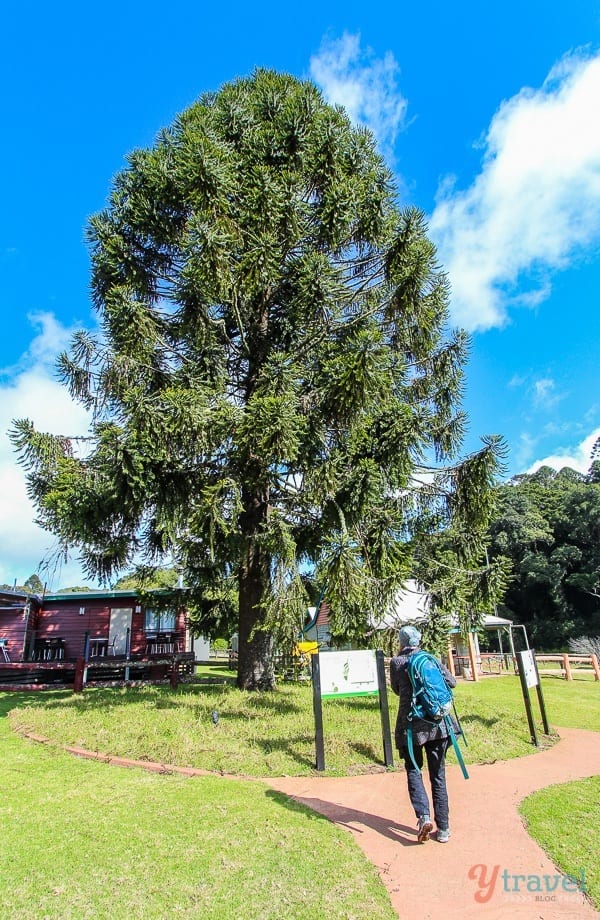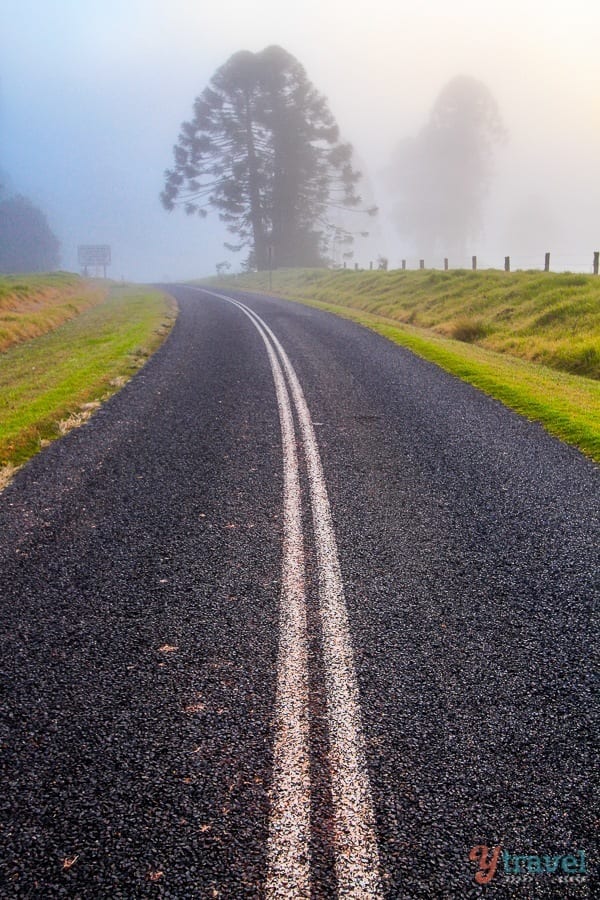This post may contain affiliate links. We may receive a small commission, at no cost to you, if you make a purchase. Read Disclosure.
The Bunya Mountains in Southern Queensland occupy an isolated portion of the Great Dividing Range and are known for having the world’s largest forest of bunya pines (araucaria bidwillii).
Encompassing an area of 19,600 hectares, this mountain range is a hiker’s paradise, with 35 kilometres of walking tracks to explore.
It’s also home to a number of native animals, from red-rock wallabies to squawking kookaburras and brush turkeys.
If you’re looking for some natural paradise to explore in Queensland, a trip to Bunya Mountains National Park should be high on the agenda.
If you’re not sure how to get there, what there is to see and do, or what it’s like, this is our complete guide to everything you need to know including our experience of visiting.
About the Bunya Mountains National Park
Bunya Mountains National Park is situated between Kingaroy and Dalby, in Southern Queensland. It’s a spectacular wilderness range overlooking the South Burnett region.
From the Gold Coast the Bunya Mountains are about a three and a half hour drive, and Brisbane to Bunya Mountains is a three hour drive.
The gateway’s to the Bunya Mountains National Park is Mowbullan.
Here you will find visitors centres at Kingaroy, Nanango and Dalby with maps and information about where you can access the park’s walking trails.
It’s an isolated section of the Great Dividing Range and is known for its mountainous peaks, the highest being Mt Kiangarow at 1,135 metres above sea level, followed by Mount Mowbullan at 1,106 metres above sea level.
Most of the mountains in the park have an elevation of around 975 meters, and are generally steep and craggy looking – no small feat for a hiker!
As well as its mountainous terrain, Bunya Mountains are also known for being home to the world’s largest stand forest of ancient bunya pines in the world.

I’d never heard of a Bunya pine before, and as our host explained, they are more rounded on top than a normal pine tree, and they produce large pineapple-shaped cones with 50-100 edible nuts each surrounded by a thick outer casing.
The surrounding plains are made up of grasslands (known locally as balds), vine thickets, eucalypt forest, and dry rainforests, with a few hidden waterfalls dotted in between.
To protect…
Click Here to Read the Full Original Article at y Travel Blog…
